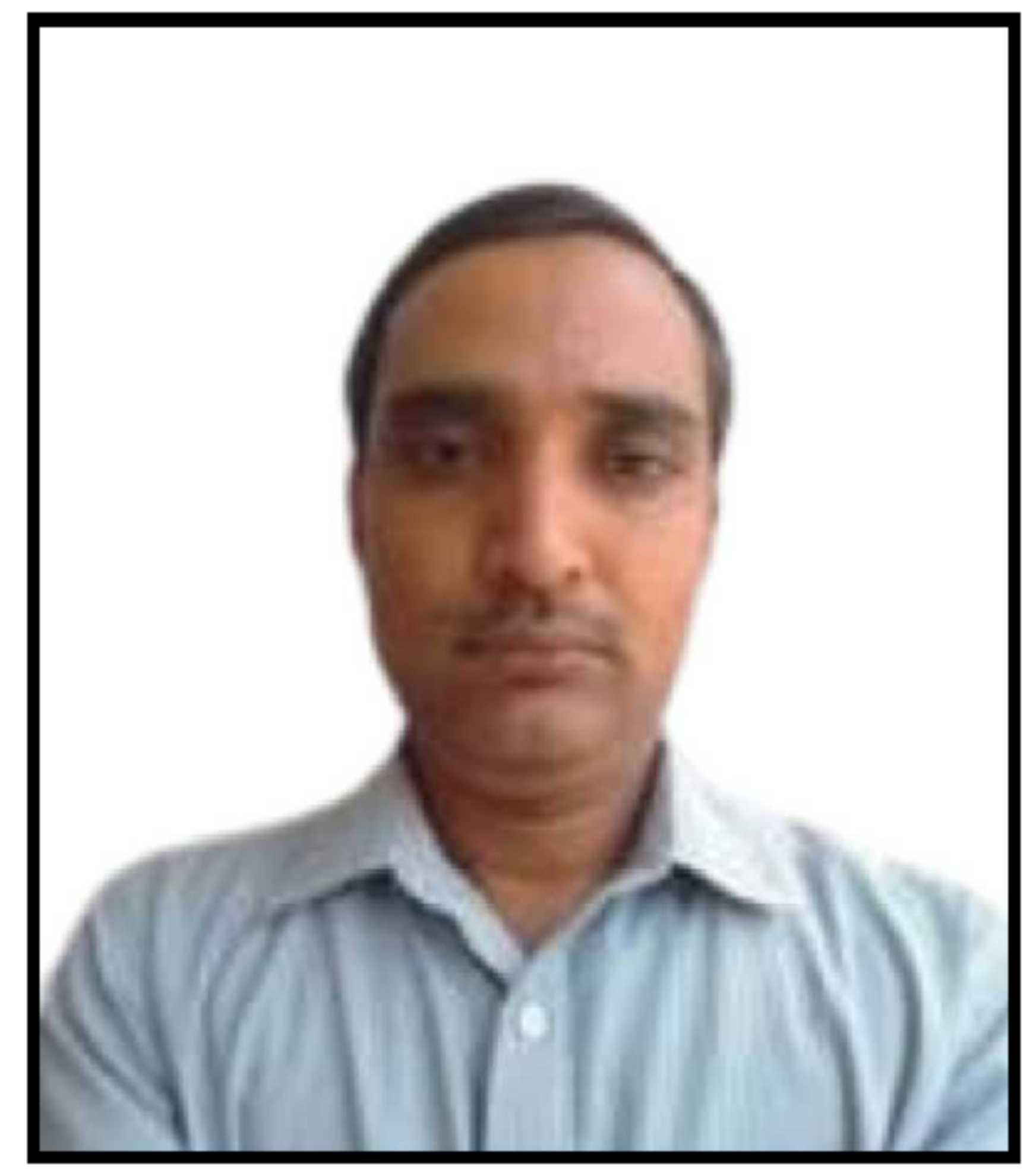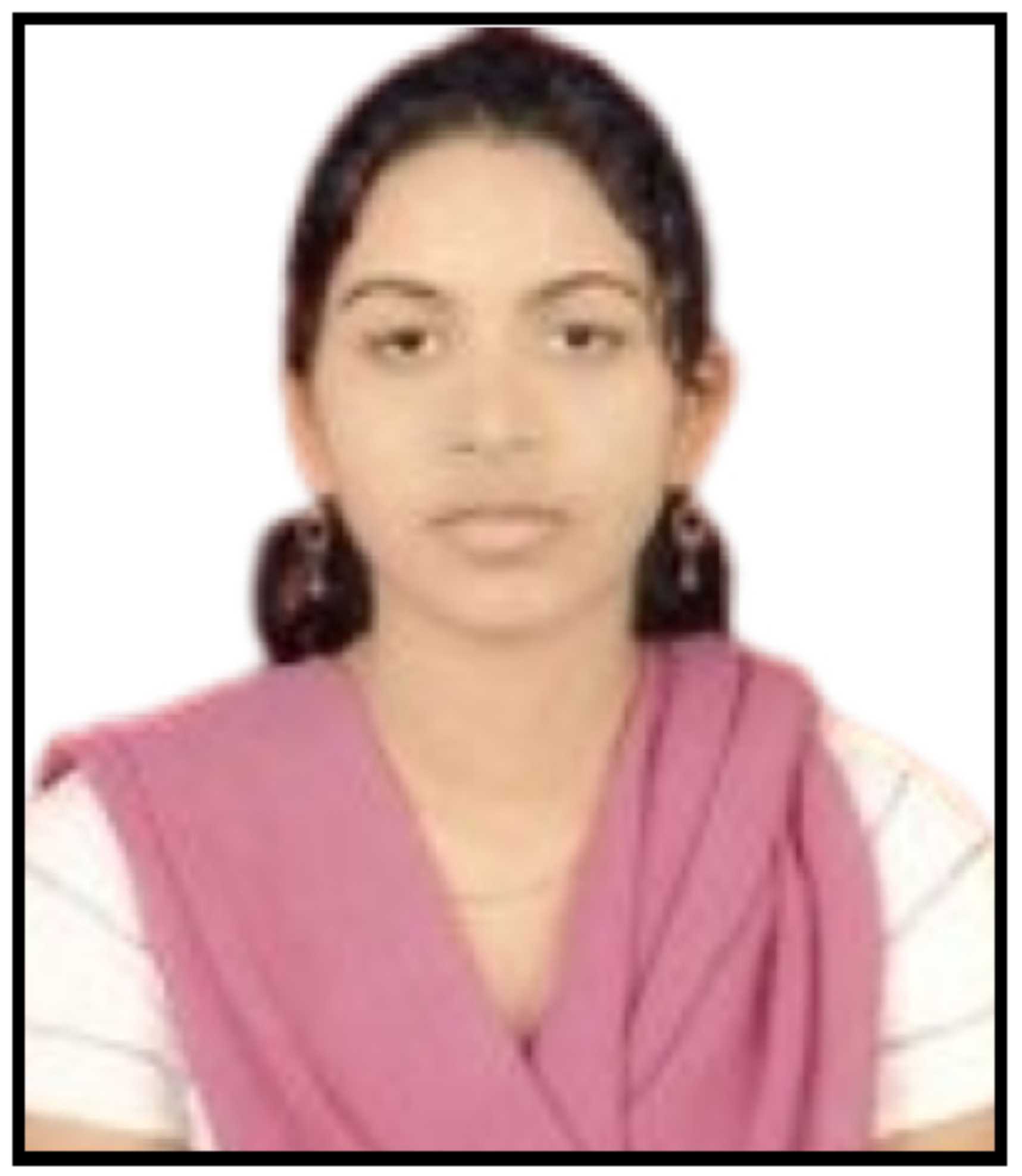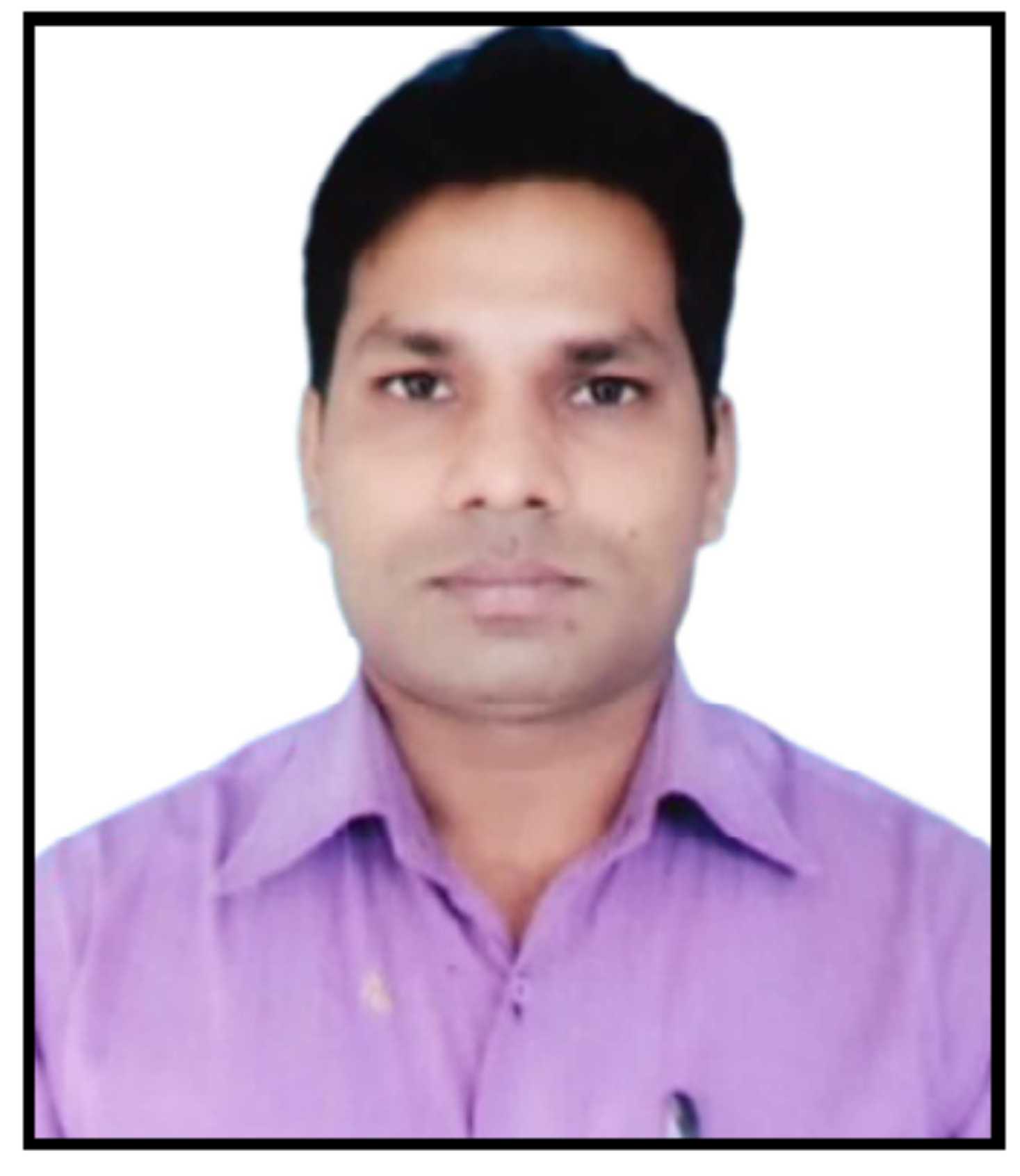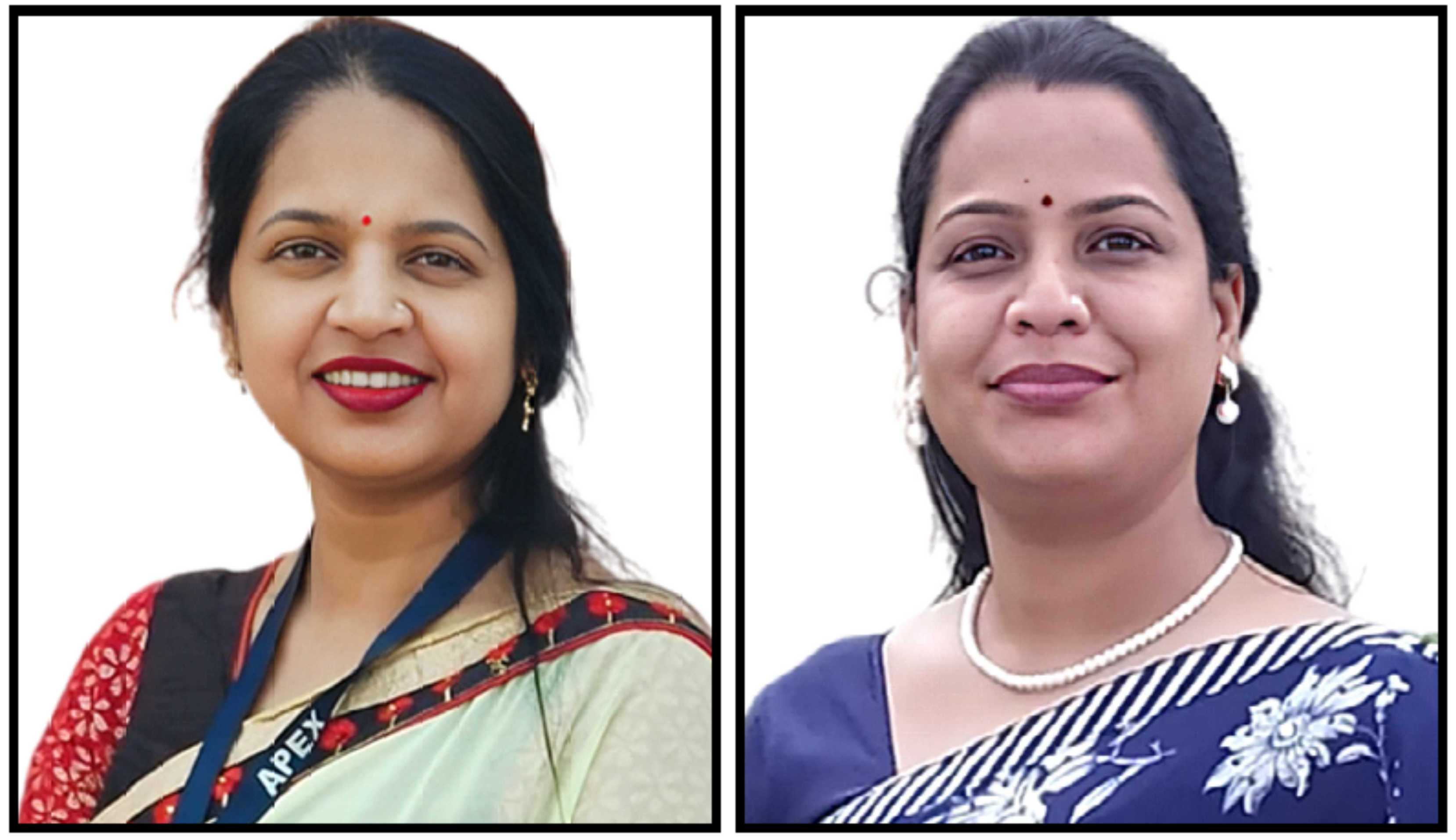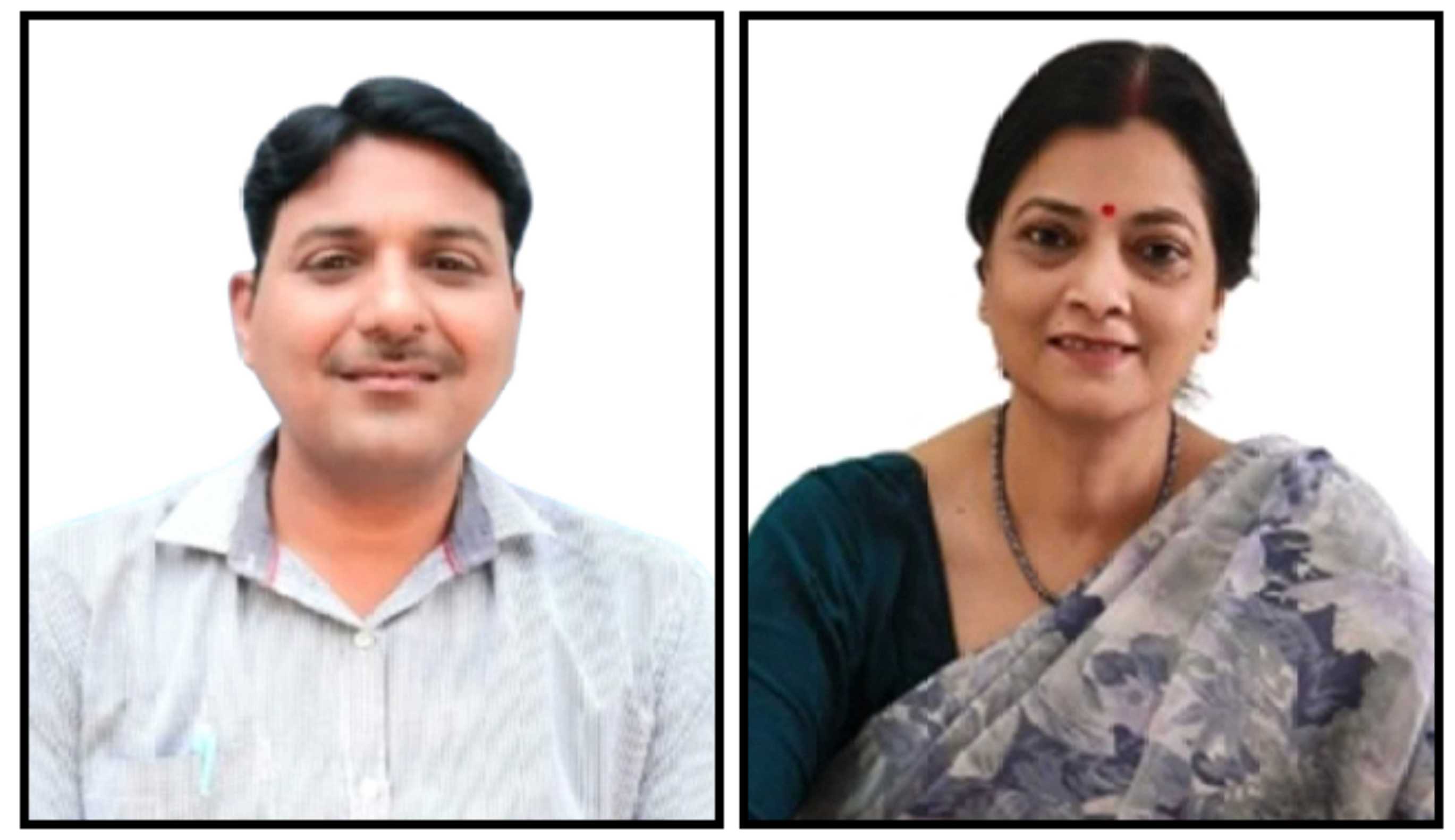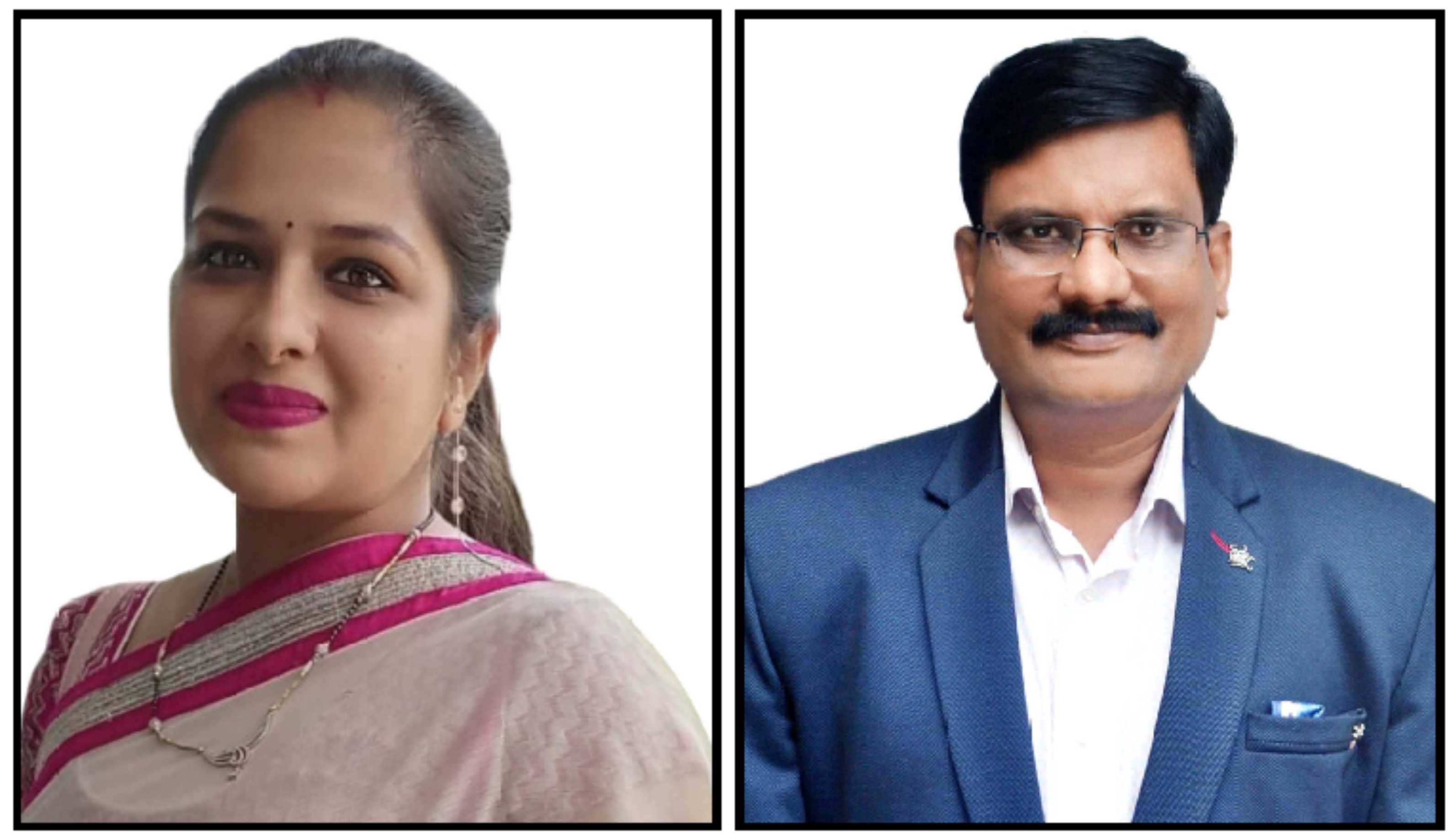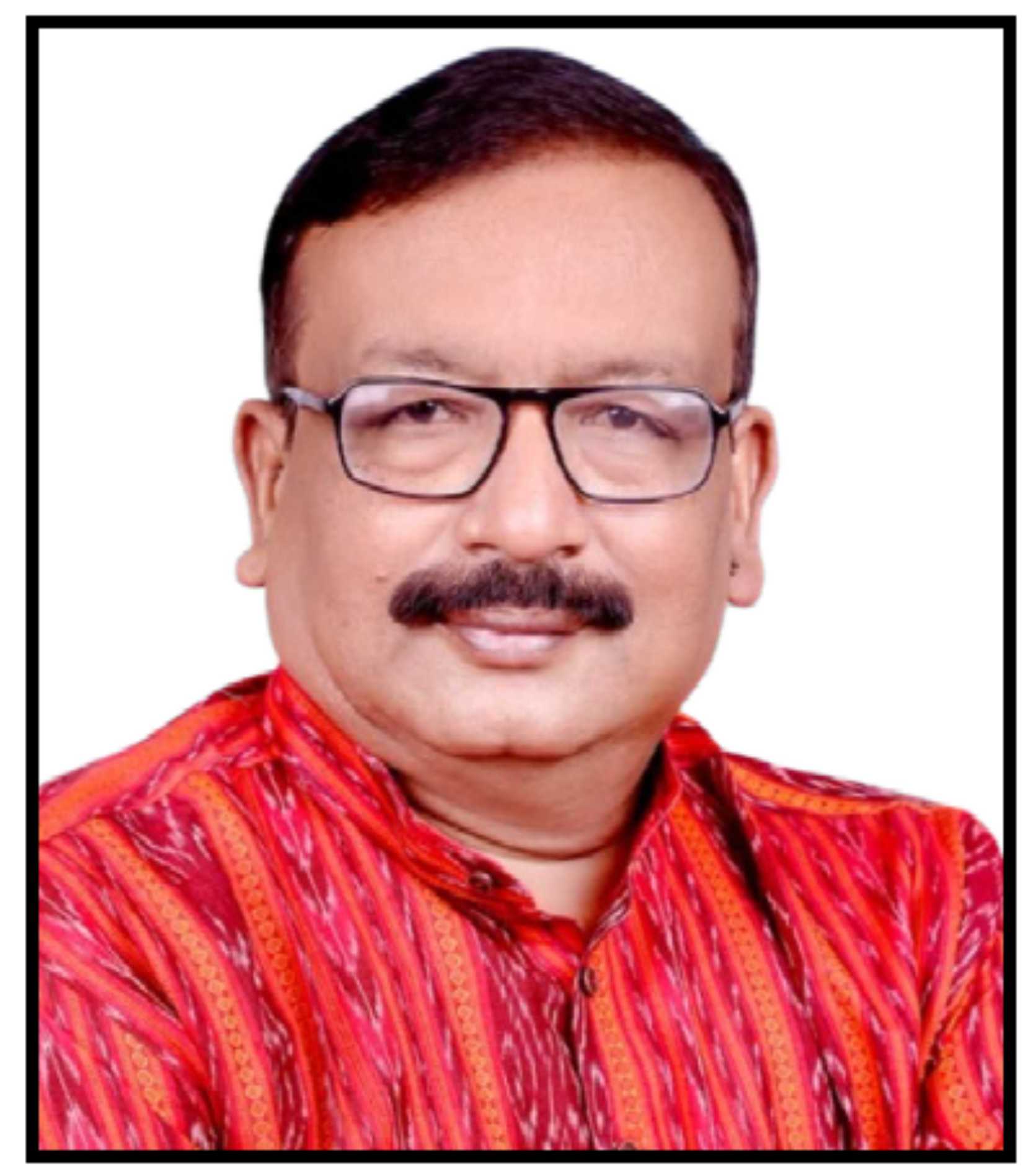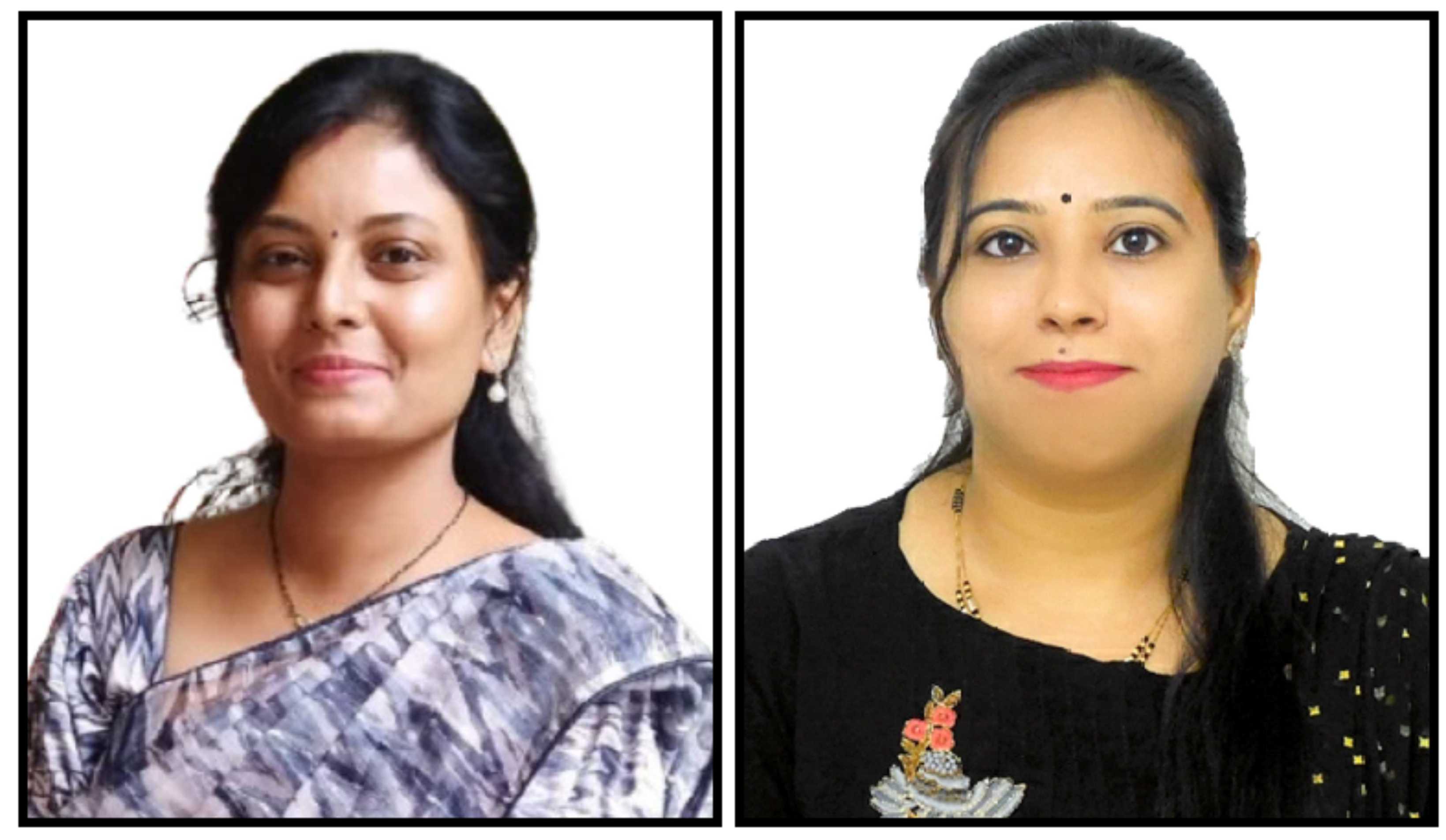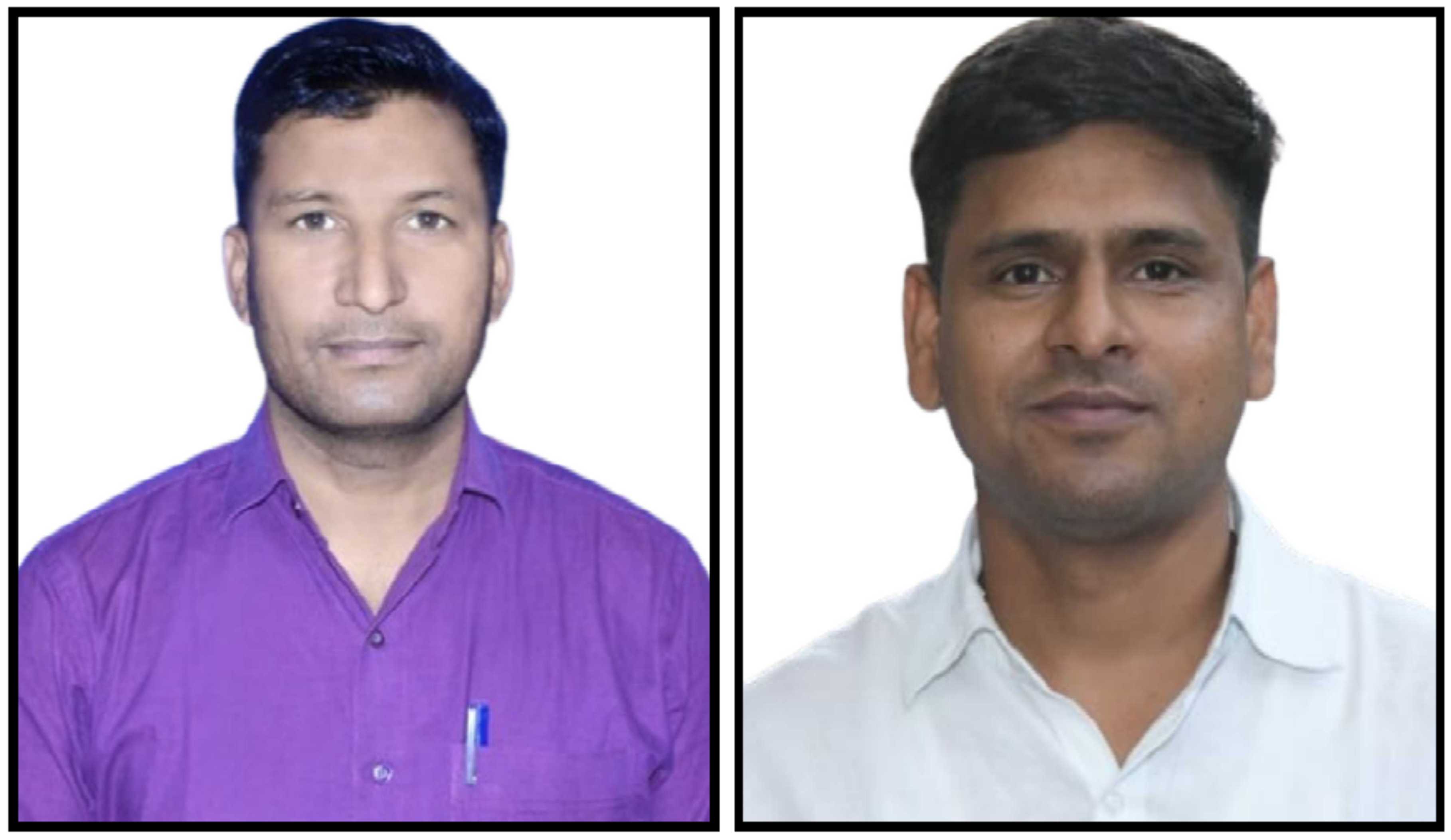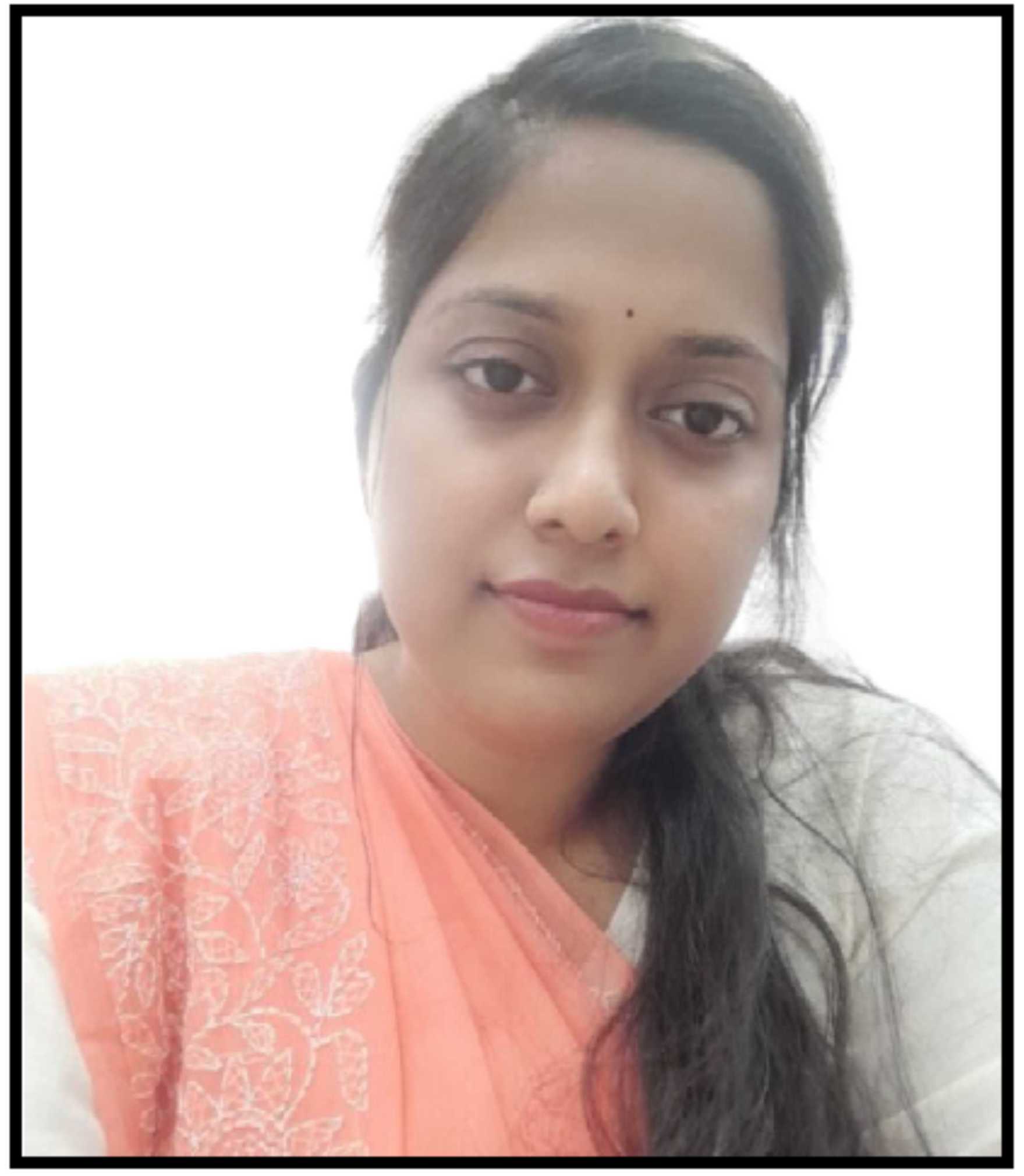- Call Us: +91 9425210308
- Email Us: shodhsamagam1@gmail.com
- RNI : CHHBIL/2018/77892
- ISSN : 2581-6918 (Online), 2582-1792 (Print)
Current Issue
Publishing Year : 2025
Read Abstract
यह अध्ययन दुर्ग जिले के पाटन तहसील क्षेत्र के अंतर्गत शासकीय एवं निजी स्कूल के माध्यमिक कक्षा के छात्रों के बीच शैक्षणिक परिणामों को आकार देने में नैतिक शिक्षा की भूमिका का पता लगाता है। सरकारी और निजी दोनों स्कूलों के सातवीं कक्षा के 100 छात्रों से आंकड़ो का संकलन किया गया। नैतिक शिक्षा (पर्सनल वैल्यू स्केल) डॉ. मधुलिका वर्मा एवं डॉ. विन्देश्वरी बख्शी द्वारा निर्मित प्रमाणिकृत उपकरण का उपयोग करके नैतिक क्षमता का आंकलन किया गया था, जबकि शैक्षणिक उपलब्धि छात्रों के पिछले वर्ष के वार्षिक परीक्षा परिणामों पर आधारित था। निष्कर्ष से यह स्पष्ट होता हैं कि उच्च नैतिक शिक्षा वाले विद्यार्थी ही मजबूत शैक्षणिक प्रदर्शन करते हैं इसके अलावा, निजी स्कूल के विद्यार्थियों और शासकीय स्कूल के विद्यार्थियों की नैतिक शिक्षा में कुछ खास अंतर नहीं पाया गया। अध्ययन समग्र छात्र- छात्राओं की सफलता को बढ़ाने के लिए शैक्षिक प्रथाओं में नैतिक विकास को शामिल करने के महत्व पर जोर देता है।
Read Keyword
विद्यार्थी, नैतिक विकास, छात्र-छात्रा, शैक्षिणिक.
Read Reference
1. Bhatia, H.R. (2003) A Textbook of Educational Psychology, Macmillan Publishers India Limited, New Delhi.
APRIL TO JUNE
Read Abstract
भारत में इंटरनेट पर भारतीय भाषाओं की उपलब्धता तेज़ी से बढ़ रही है। आज इंटरनेट पर हिन्दी, मराठी, तमिल, तेलुगु, कन्नड़, मलायलम, गुजराती, बंगाली जैसी कई भारतीय भाषाओं में इन्टरनेट पर जानकारियां उपलब्ध है जिनमें हिंदी भाषी लोगों की संख्या अन्य भारतीय भाषाओं की तुलना में काफ़ी अधिक है और दिन ब दिन बढ़ती जा रही है। भारत में पिछले दशक का अध्ययन करें तो यह पता चलता है कि इंटरनेट डेटा का उपयोग भारतीयों में तेजी से बढ़ रहा है। शहरी क्षेत्रों के साथ-साथ ग्रामीण क्षेत्रों में भी खपत में बढ़त आई है। इंटरनेट एंड मोबाइल एसोसिएशन ऑफ इंडिया (IAMAI) और कांटर (KANTAR) की एक संयुक्त रिपोर्ट के अनुसार, भारत में 2025 के अन्त तक इंटरनेट उपयोगकर्ताओं की संख्या 900 मिलियन से अधिक हो जाएगी, जिसमें देश के ग्रामीण भागों से आने वाले उपयोगकर्ताओं की संख्या बढ़ती जाएगी साथ ही साथ यह भी जानने की बात है कि शहरी इलाकों में लोग इंग्लिश या ज्यादा भारतीय भाषाओं में इंटरनेट का इस्तेमाल माध्यम के रूप में कर रहे हैं। इन भाषाओं में तमिल, तेलुगु और मलयालम जैसी भाषाएं शामिल हैं।
Read Keyword
इन्टनेट, डिजिटल मार्केटिंग, सोशल मीडिया, आर्टिफीशियल इंटेलीजेंस, वर्चुअल रियलिटी.
Read Reference
1. Hindi News, bhaskar.com. 18 January 2025. https://www.bhaskar.com/business/news/98-people-in-the-country-use-the-internet-in-their-local-language-134312558.html#:~ :text=Their%20Local%20Language-,%E0%A4%A6%E0%A5%87%E0% A4%B6%20%E0%A4%AE%E0%A5%87%E0 %A4%82%2098%25%20%E0% A4%B2%E0%A5%8B%E0%A4%97%20%E0%, Accessed on 12/03/2025.
APRIL TO JUNE
Read Abstract
The current generation of adolescents is the largest in the history. The global population of roughly 2 billion adolescents constitutes around 24% of the world’s population. Studies reveal that by 2030 at least half of the world’s adolescents will live in multi burden society facing complex mental health issues in the form of mental disorders or suicide. This challenge has not been taken as the area of greatest need with any counsellors at the schools as well as work places, girls in particular. Proper laws and policies needs to be implemented for this digital generation as more than 95% of adolescents in the present society are connected digitally. It calls for enabling global suggestion and changes for sustained improvements in adolescents’ health and well being. These environments should protect adolescents’ health and rights. This study aims to explore the prevalence and impact of anxiety, depression, and stress among school students, focusing on their academic performance, social interactions, and overall quality of life. The uncontrolled use of online spaces and social media today are also playing a pivotal role for deteriorating mental health of adolescents. By identifying the key contributing factors and their implications, the study will offer actionable recommendations for creating effective support systems for individual as well as society.
Read Keyword
Adolescent, Stress, Mental Health, Schools.
Read Reference
1. American Psychological Association (APA). (2013) Diagnostic and statistical manual of mental disorders (5th ed.), American Psychiatric Association, Washington, D.C, https://doi.org/10.1176/appi.books.9780890425596.
APRIL TO JUNE
Read Abstract
भारत संरचनात्मक दृष्टि से गांव का देश है और सभी ग्रामीण समुदायों में अधिक मात्रा में कृषि कार्य किया जाता है इसलिए भारत को कृषि प्रधान देश की संज्ञा मिली हुई है। लगभग 70 प्रतिशत भारतीय किसान हैं वह भारत देश के रीड की हड्डी के समान है, लेकिन भारतीय किसान गरीब है, उनकी गरीबी पूरी दुनिया में प्रसिद्ध है। किसी को दो वक्त का खाना भी नसीब नहीं हो पता वे अपने बच्चों को शिक्षा भी नहीं दे पाते। वह अपने बेटे और बेटियों को ठीक से पोशाक तक खरीद कर नहीं दे पाते, वह अपनी पत्नी को गहने पहनने का सुख नहीं दे पाते हैं। भारतीय किसानों को गांव के दलाल द्वारा अक्सर परेशान किया जाता है इसलिए वे अपने ही उपज का आनंद नहीं ले पाते हैं। इस शोध पत्र में भारतीय किसानों की स्थिति किस तरह की है और उनकी समस्याएं किस-किस प्रकार की हैं इस पर केंद्रित किया गया है।
Read Keyword
किसान आंदोलन, समर्थन मूल्य, फसल लागत, बंजर जमीन, मूल्य निर्धारण, कच्चा माल.
Read Reference
1. त्रिपाठी, अरुण कुमार (2022) संकट में खेती, वाणी प्रकाशन, 21 ए दरियागंज, नई दिल्ली।
APRIL TO JUNE
Read Abstract
यह शोध पत्र बिलासपुर जिले के चार अलग-अलग विकासखंड (कोटा, तखतपुर, बिल्हा और मस्तुरी) के क्षेत्रों के सहकारी बैंकों में ग्राहक संतुष्टि के स्तर व सहकारी बैंकों में डिजिटल परिवर्तन अपनाने में सामने आने वाली चुनौतियों का विभिन्न उत्तरदाताओं से प्राप्त सूचनाओं के आधार पर एक अध्य्यन है। उद्देश्यों व समस्याओ के समाधान के लिये साहित्य की समीक्षा की गयी है। परिणामों को निर्धारित करने के लिए आवृत्ति और संभाव्यता वितरण दोनों का उपयोग किया गया और निष्कर्ष निकाला गया कि बिलासपुर जिले के सहकारी बैंको में ग्राहकों की संतुष्टि का स्तर बैंक की डिजिटल सेवाओं की विश्वसनीयता और उत्तरदायित्व पर निर्भर है। विशेष रूप से, जो ग्राहक बैंक के डिजिटल प्लेटफॉर्म की उपयोगकर्ता-मित्रता, समस्याओं के समाधान में सहायता और समग्र प्रदर्शन से संतुष्ट हैं, वे बैंक की सेवाओं को अपनी जरूरतों के अनुरूप मानते हैं।
Read Keyword
डिजिटल बैंकिंग, बैंकिंग प्लेटफॉर्म, प्रौद्योगिकी, उपयोगकर्ता-मित्रता.
Read Reference
1. भाटिया, ए.; और वर्मा (2017) वित्तीय समावेशन को बढ़ावा देने में सहकारी बैंकों की भूमिका, जर्नल ऑफ कोऑपरेटिव बैंकिंगस्टडीज, 12(3), 45-58।
APRIL TO JUNE
Read Abstract
नागार्जुन हिंदी साहित्य जगत के मूर्धन्य साहित्यकारों में से एक है। बिहार राज्य के दरबंगा जिले के सतलखा गाँव में जन्मे नागार्जुन, संस्कृत में ‘चाणक्य’, मैथिली क्षेत्र में ‘यात्री’ और हिंदी साहित्य में ‘नागार्जुन’नाम से जना जाता था। सन् 1936 में श्री लंका में प्रवास की अवधि में उनका नाम नागार्जुन में बादल दिया गया था। नागार्जुन कविता, कहानी, उपन्यास, निबंध के लोकप्रिय लेखक थे। प्रस्तुत शोध आलेख में उनके श्री लंका के प्रवास के समय की छाप और उनकी साहित्य सेवा पर विवरण उपलब्ध है। इसके लिए द्वितीयक आँकड़े संकलित किये गये हैं।
Read Keyword
श्री लंका, समाजवादी विचार धारा, कविता, उपन्यास, कहानी, नागार्जुन.
Read Reference
1. भट्ट, प्रकशचन्द्र (1975) नागार्जुनः जीवन और साहित्य, सेवसादन प्रकाशन, रामपुरा, जिला-मंदसौर, म. प्र, पृ. 17।
APRIL TO JUNE
Read Abstract
Read Keyword
सामाजिक समावेशन, नवाचार, आर्थिक विकास, आजीविका, आदिवासी, महिला.
Read Reference
1. बर्जर, पी.; और हेइडमैन, एफ. (सं.). (2013) भारत का आधुनिक मानवविज्ञानः नृवंशविज्ञान, विषय और सिद्धांत, रूटलेज, यूएसए।
APRIL TO JUNE
Read Abstract
This paper explores the nuanced interplay between modernity and spirituality in the works of Brazilian author Paulo Coelho. Through an analysis of novels such as The Alchemist, Brida, The Zahir, and Aleph, the study reveals how Coelho’s narratives reflect contemporary existential concerns while offering profound spiritual insights. His novels act as a bridge between materialism and metaphysics, guiding readers on paths of self-discovery and inner fulfillment.
Read Keyword
Paulo Coelho, Modernity, Spirituality, reflect.
Read Reference
1. Abdulatif, I. A. (2018) Self-discovery in Paulo Coelho’s Aleph, Journal of the College of Languages (JCL), ISSN-2074-9279, Issue 37, p. 73-89.
APRIL TO JUNE
Read Abstract
बायोगैस सौर ऊर्जा और पवन ऊर्जा की तरह ही ऊर्जा के नवीकरणीय स्त्रोत है। यह एक स्वच्छ ऊर्जा का स्त्रोत है जो पारंपरिक इंधन की तुलना में कम हानिकारक उत्सर्जन करता है। इसका उपयोग खाना पकाने के लिए, प्रकाश के लिए, बिजली के लिए और परिवहन के लिये किया जा सकता है। सबसे बड़ी बात है कि बायोगैस के उपयोग से ग्रीन हाउस गैसों का उत्सर्जन कम होता है और कार्बनिक अपशिष्ट के प्रबंधन में सुधार होता है। इसके दहन से प्रदूषण कम होता है और हवा साफ करने में मदद मिलती है। बायोगैस के माध्यम से ग्रामीण क्षेत्रों में ऊर्जा की आपूर्ति करने से रोजगार के अवसर पैदा होता है तथा इसके उत्पादन से प्राप्त जैविक खाद्य का उपयोग करके फसलों की पैदावार में भी वृद्धि की जा सकती है।
Read Keyword
Read Reference
1. कमलेश कुमार (Thesis) भारतीय ऊर्जा नीति का भारत के आयात-निर्यात पर प्रभाव का समीक्षात्क अध्ययन जिस पर वीर कुँवर सिंह विश्वविद्यालय द्वारा पी-एच.डी. की उपाधि प्रदान की गई है, (2008)।
APRIL TO JUNE
Read Abstract
राष्ट्र की अस्मिता, सुरक्षा एवं संप्रभुता का प्रश्न हो और हमारे अन्दर संवदेना न हो तो ऐसा जीवन व्यर्थ है। स्वामी विवेकानंद जो एक संवेदनशील व्यक्ति थे, उन्होंने देश के कोने-कोने का भ्रमण कर देश की वास्तविक स्थिति का ज्ञान प्राप्त कर लिया था। स्वामी जी के अनुसार भारतवर्ष में वह प्रवाह धर्म है। इसलिए स्वामी जी देशवासियों को संबोधित करते हुए कहते है कि जो किया सो अच्छा है और सब और अच्छा करने का अवसर आया है। पाश्चात्य देशों का भ्रमण करते हुए स्वामी जी ने राष्ट्रवाद का जो परिचय दिया है वह सराहनीय है।
Read Keyword
राष्ट्र, अस्मिता, सुरक्षा, संप्रभुता, स्वामी विवेकानंद.
Read Reference
1. स्वामी, अपूर्वानंद (1975) स्वामी विवेकानन्द संक्षिप्त जीवनी तथा उपदेश, रामकृष्ण मठ, नागपुर, पृ. 6।
APRIL TO JUNE
Read Abstract
भारतीय लोक संस्कृति पर शिक्षा पर प्रभाव हर काल में दिखाई देता है। प्राचीन काल से आज तक आधुनिक युग तक शिक्षा के द्वारा ही संस्कृति को अपने आने वाली पीढ़ी को हस्तांतरित किया जाता है। भारतीय लोक संस्कृति का यह प्रभाव हमें आज शिक्षा जगत में शिक्षा प्रणाली, शिक्षण विधियॉ और पाठ्यक्रम में दिखाई देती है। प्राचीन भारतीय संस्कृति में गुरू शिष्य परम्परा के माध्यम से शिक्षार्थियों को ज्ञान, नैतिकता और जीवन के मूल्यों को विकसित किया जाता था जिससे उन्हे भारतीय संस्कृति की जड़ों से जोंड़ कर रखा जाये। आधुनिक शिक्षा पद्धति से भारतीय लोक सांस्कृति से प्राप्त ज्ञान और दर्शन शिक्षा के माध्यम से आधुनिक पीढ़ी को हस्तांतरित किया जाता है। प्राचीन संस्कृति की जानकारी हेतु भारतीय दर्शन, इतिहास जैसे विषयों को पाठ्यक्रम में शामिल किया जाता है जिससे छात्र भारतीय लोक संस्कृति के मूल्यों, आदर्षो और परम्परा को समझ सके और अपनी संस्कृति के बारे मे जानकर गर्व करें। भारतीय लोक संस्कृति का ज्ञान शिक्षा के माध्यम से प्रसारित किया जाता है जिससे हम अपने भारतीय लोक संस्कृति को सरलता से मूल्य, नैतिकता, समावेषन, सहिष्णुता आदि गुण शिक्षार्थी को हस्तांतरित करते है। भारतीय लोक संस्कृति हमारी शिक्षा प्रणाली को आधार प्रदान करती है जिससे शिक्षार्थी को सर्वांगीण विकास हो सके। भारतीय लोक संस्कृति शिक्षार्थी के मूल्यों और गुणों को विकसित करने का माध्यम है। शिक्षा के द्वारा हमारे समाज में भारतीय संस्कृति को परम्पराएॅ, रहन-सहन, खान-पान, रीति-रिवाज आदि का विस्तार होता है। यह शिक्षा जगत के लिये एक आवश्यक एवं आधारशिला के रूप में है जिससे हमारे समाज का निर्माण होता है। भारतीय लोक संस्कृति के द्वारा शिक्षण विधि पाठ्यक्रम अनुषासन, विद्यालय समस्त विषयवस्तु का ज्ञान सरलता होता है। भारतीय लोक संस्कृति में विविधता है जो हमें स्पष्ट दिखायी देती है, जैसे हर 15 किलोमीटर पर लोगों की बोली बदल जाती है। भारतीय लोक संस्कृति के माध्यम से शिक्षा व्यवस्था का एक प्रश्स्त मार्ग अवतरित होता है जिससे बहुत सरलता से हम अपनी लोक संस्कृति, साहित्य, सभ्यता को आगे बढ़ा सकते है। लोक संस्कृति के माध्यम से लोक गीत, लोक कथाएॅ, लोकोत्तियॉ, मुहावरें, लोक त्यौहार, रीति-रिवाज, आदि का हस्तान्तरण के द्वारा ही संभव है।
Read Keyword
भारत, लोक संस्कृति, शिक्षा, साहित्य.
Read Reference
1. श्रीवास्तव, संजय प्रसाद, (2019) लोक साहित्य की विधाएँः एक अध्ययन, ISSN Point : 2394-7500, ISSN Online : 2394-5869, Impact Factor : 5.2, IJAR: 5 (8), 132-136, www.allreach journal.com, Received : 07-06-2019, Accessed on 10/02/2025.
APRIL TO JUNE
Read Abstract
शिक्षा एक गतिशील प्रक्रिया है, उसकी गतिशीलता की निरंतरता को बनाए रखने में शिक्षक की अहम् भूमिका रहती है। शिक्षण प्रक्रिया का प्रभाव विद्यार्थियों के सीखने की क्षमता पर पड़ता है। सक्रिय अधिगम विधि से विद्यार्थियों की समझ विकसित होती है। प्रस्तुत शोध में सक्रिय अधिगम विधि की प्रभावशीलता का अध्ययन किया गया है। कक्षा 7 वीं के 40-40 विद्यार्थियों का प्रायोगिक तथा नियंत्रित समूह बनाकर, तथा प्रायोगिक समूह का सक्रिय अधिगम विधि द्वारा शिक्षण कराया गया। स्वनिर्मित शैक्षिक उपलब्धि परीक्षण तथा विज्ञान पढ़ने में रूचि प्रश्नावली प्रशासित किया गया व सांख्यिकीय गणना द्वारा आंकड़े प्राप्त किए गए। गणना के आधार पर यह ज्ञात हुआ कि सक्रिय अधिगम विधि का विद्यार्थियों के सीखने की क्षमता पर सकारात्मक प्रभाव पड़ता है, अतः इस विधि के प्रयोग से विद्यार्थियों के विषय के प्रति रूचि विकसित किया जा सकेगा।
Read Keyword
शिक्षा, सक्रिय, प्रभाव, प्रयोग, नियंत्रण.
Read Reference
1. गोलानी, टी.पी. (1982) दृश्य एवं श्रव्य सहायक सामग्री का थाने जिले के उच्चतर माध्यमिक विद्यालयों में उपयोग, शासकीय शिक्षा महाविद्यालय, रायपुर, छत्तीसगढ़।
APRIL TO JUNE
Read Abstract
This review critically examines the implementation of decentralised health governance in rural India, specifically focusing on the Bilaspur district in Chhattisgarh. The study investigates the roles, responsibilities, and lived experiences of health service beneficiaries and frontline providers within the decentralised framework. Using insights from empirical research, Government policy documents, and scholarly literature, it analyses how local governance mechanisms such as Panchayati Raj Institutions (PRIs), Rogi Kalyan Samitis (RKS), and community health workers particularly ASHAs and ANMs have contributed to or hindered equitable healthcare delivery. The review highlights the achievements of decentralisation in enhancing service outreach and participatory governance while also identifying enduring challenges such as capacity deficits, limited community engagement, weak accountability, and socio-political inequities. The paper analyses the need for robust capacity-building, financial devolution, and inclusive governance to realise the full potential of decentralised health systems in rural India.
Read Keyword
Decentralisation, Health Governance, Rural Healthcare, Panchayati Raj Institutions, Rogi Kalyan Samiti, ASHA Workers.
Read Reference
1. Baru, R.; Acharya, A.; & Karan, A. (2010) Health systems in transition: India. WHO Regional Office for South-East Asia.
APRIL TO JUNE
Read Abstract
यह शोध-पत्र सम्राट अशोक की धम्म नीति का एक समग्र अध्ययन प्रस्तुत करता है, जिसका उद्देश्य इस प्राचीन नैतिक दर्शन की समकालीन प्रासंगिकता का विश्लेषण करना है। अशोक द्वारा कलिंग युद्ध के पश्चात अंगीकार की गई धम्म नीति, जिसमें अहिंसा, करुणा, धार्मिक सहिष्णुता, सामाजिक समानता, और पर्यावरणीय संरक्षण जैसे सिद्धांत सम्मिलित थे, न केवल तत्कालीन समाज में नैतिक अनुशासन स्थापित करने का प्रयास थी, बल्कि यह आज के वैश्विक सामाजिक, राजनीतिक और पारिस्थितिक संकटों के संदर्भ में भी उपयोगी सिद्ध हो सकती है। शोध में ऐतिहासिक स्रोतों विशेषकर अशोक के शिलालेखों, स्तंभ लेखों और समकालीन बौद्ध साहित्य का विश्लेषण करते हुए यह दर्शाया गया है कि धम्म नीति एक सार्वभौमिक नैतिक दृष्टिकोण प्रस्तुत करती है। आधुनिक समाज में जातीय, धार्मिक और लैंगिक भेदभाव, जलवायु परिवर्तन, तथा राजनीतिक भ्रष्टाचार जैसे मुद्दों पर धम्म के सिद्धांत प्रभावी समाधान प्रदान करते हैं। अध्ययन तुलनात्मक दृष्टिकोण अपनाते हुए गांधीवादी अहिंसा और संयुक्त राष्ट्र के सतत विकास लक्ष्यों (SDGs) के साथ धम्म नीति की साम्यता को रेखांकित करता है, तथा रोमन और चीनी प्राचीन शासकों की नीतियों से इसकी तुलना करता है। शोध यह भी स्वीकार करता है कि आधुनिक राजनीतिक संरचनाओं में धम्म नीति को पूर्णतः लागू करना एक चुनौती है, परंतु नैतिक शिक्षा, नीति निर्माण और जनजागरूकता के माध्यम से इसके तत्वों को पुनर्जीवित किया जा सकता है। अंततः यह शोध-पत्र धम्म नीति को एक ऐसे नैतिक मार्गदर्शन के रूप में प्रस्तुत करता है जो आज के समाज को अधिक न्यायपूर्ण, सहिष्णु और टिकाऊ बना सकता है।
Read Keyword
अशोक, धम्मनीति, अहिंसा, न्याय, शिलालेख, इतिहास.
Read Reference
1. थापर, रोमिला (1997) अशोक और धम्म की अवधारणा, ऑक्सफोर्ड यूनिवर्सिटी प्रेस, नई दिल्ली।
APRIL TO JUNE
Read Abstract
दलित साहित्य अर्थात् मानवीय अधिकारों एवं मूल्यों से उपेक्षित समाज का साहित्य। साहित्य में दलित साहित्य का सफर संघर्षों भरा रहा है चूंकि यह साहित्य पीड़ा और संत्रास का है इसीलिए इसमें विरोध का स्वर भी अघिक है। दलित साहित्य में इतिहास के साथ-साथ उपन्यास, नाटक, निबंध, आलोचना, आत्मकथायें आदि विधायें रहीं हैं। इसके माध्यम से दलित साहित्य अपनी एक अलग पहचान बनाता है। दलित साहित्य को हिन्दी की मुख्य धारा में लानें के लिए दलित लेखकों को अभी बहुत संघर्ष करना बाकी है। हाँलाकि इस वर्ग के साहित्यकारों के क्रमबद्व प्रयासों के द्वारा दलित साहित्य हिन्दी साहित्य में अपनी एक पकड़ बनाने का प्रयास कर रहा है।
Read Keyword
दलित, उपेक्षित, सामाजिक लोकतंत्र, बहिष्कृत, तिरस्कृत, पुर्न्मूल्यांकन.
Read Reference
1. प्रसाद, माता (1993) हिन्दी काव्य में दलित काव्यधारा, वाराणसी वि.वि. प्रकाशन, वाराणसी, पृ. 339।
APRIL TO JUNE
Read Abstract
This study examines the impact of intrinsic and extrinsic motivation on employee loyalty and retention in India’s organized retail sector, focusing on companies like Reliance Smart, D-Mart, Big Bazaar, and Vishal Mega Mart. The research identifies key retention factors, including compensation, job satisfaction, and demographic considerations, while highlighting the importance of strategies such as competitive pay, career development, and a positive work culture. Findings reveal that retention strategies vary in effectiveness depending on organizational and employee factors. The paper recommends tailored retention approaches, stronger employee recognition, and better work-life balance to foster long-term loyalty in the retail workforce.
Read Keyword
Work Motivation, Employee Loyalty, Staff Retention, Organized Retail Chains, Human Resource Strategies.
Read Reference
1. Aggarwal, S.; & Bhargava, S. (2016) Effect of motivation on employee performance in retail sector, Indian Journal of Commerce and Management Studies, 7(1), 75–80.
APRIL TO JUNE
Read Abstract
शिक्षा प्रकाश का यह स्त्रोत है जो जीवन के विभिन्न क्षेत्रों में व्यक्ति का सच्चा पथ प्रदर्शन करती है। परिवार में मालक की माता ही उनकी प्रथम शिक्षिका या गुरू होती है। जो उनके सृजनशील विकास करने में उसका पथ-प्रदर्शन करने में एक विश्वरानीय मित्र की तरह जीवन पर्यन्त उसकी मदद करती है। एक परिवार के नैतिक मूल्य, परम्पराएँ, सामाजिक स्थिति, विचार आदि का प्रभाव बालक के व्यक्त्तित्त्व पर अवश्य ही चडता है, जिससे वह एक आदर्श व योग्य नागरिक बनता है। ‘‘जननी जन्मभूमिश्च स्वर्गादपि गरीयसी‘‘ अर्थात् जननी और जन्मभूमि स्वर्ग से भी बढ़कर होते है। संवेग की विशेषता के आधार पर यह कहा जा राकता है की संवेगों की बुद्धि पर विशेष प्रभाव पड़ता है। बुद्धि से तात्पर्य व्यक्ति की तत्परता, तात्कालिकता, समायोजन तथा समस्या समाधान की समताओ के संदर्भ में प्रयोग होता है मानसिक योग्यता ही उनके असमान होने का प्रमुख कारण है। संवेगात्मक बुद्धि से तात्पर्य उस समग्र समता से है जो उसकी विचार प्रक्रिया उपयोग करते हुए अपने तथा दूसरो के संवेगो को जानने, समझने तथा उनका सर्वाेत्तम प्रबंध करने में सहायता करती है।
Read Keyword
शिक्षा, महिला, बच्चे, समाज, परंपरा.
Read Reference
1. अस्थाना, विपिन; एवं अस्थाना, श्वेता (2009) मनोविज्ञान और शिल मापन एवं मूल्यांकन, असवाल पब्लिकेशन आगरा, पृ. 205।
APRIL TO JUNE
Read Abstract
This article studies a deep and transformative inward journey of a new poet who explores a new way of self -help, motivational and inspirational thinking. By examining Birendra Prasad’s Search of Soul, it tries to depict the relationship between human and universe. Through these verses, he invites readers to explore the complexities of the human spirit and the universal emotions that connect us all. This article also makes a compelling argument for a more global or universal approach to think about a poetic reflection on the pursuit of truth and self-acceptance. Prasad is such a writer who is very much conscious about human condition in all its complexity, its beauty, its sorrow, and its boundless potential for transformation. The way he offers a source of motivation and inspiration for anyone searching for hope, love, and the strength to overcome life’s challenges is worthy to discuss in detail. In his collection of poem, Search of Soul the novel, Prasad has beautifully shown his concern about the deepest corners of the soul which reflects the struggles, triumphs, and aspirations that shape our lives. Prasad tries to discuss raw emotional intensity, the verses capture the longings and desires we all face, the yearning for love, the ache of loneliness, and the quiet struggles we often face in our hearts and minds. Hope, love, and the strength to overcome life’s challenges are major concerns for him. His outlook towards life is very positive and he raises many serious concerns about issues which unbalance emotional intensity. This book is an intense and memorable collection of poem expected only from a writer of this stature.
Read Keyword
Transformative, Inner Exploration, Complexity, Humanity.
Read Reference
1. Chaudhuri, Rosinka (2016) A History of Indian Poetry in English, Cambridge University Press, New York.
APRIL TO JUNE
Read Abstract
माध्यमिक स्तर की शिक्षा विद्यालय की एक महत्त्वपूर्ण कड़ी के रूप में कार्य करती है। विद्यार्थियों के मनोविज्ञान का अध्ययन विद्यार्थियों की सांवेगिक बुद्धि तथा समायोजन के बिना अधूरा है। माध्यमिक स्तर के विद्यार्थियों पर ही देश के भौतिक,तकनीक व वैज्ञानिक विकास का दायित्व हैै। उनकी कार्यशीलता में ही सुनहरे भविष्य की कल्पना छिपी हुई है। उनके हाथों में ही देश के सुनियोजित निर्माण की नींव हैै। माध्यमिक स्तर पर विद्यार्थियों में संवेगात्मक बुद्धि का विकास हो चुका होता है। इसी अवस्था काल को किसी व्यक्ति के जीवन का निर्माण काल माना जा सकता है। विद्यार्थियों को सुसमंजित रूप में समाज में प्रस्तुत करना शिक्षा का मुख्य उद्देश्य रहता है। विद्यार्थियों को संस्कारबद्ध करने में अध्यापक तथा अभिभावक दोनों का ही महत्त्वपूर्ण योगदान रहता है अतः दोनों के लिए ही आवश्यक है कि वे विद्यार्थी की ठीक प्रकार से पहचान करें तथा तदनुरूप ही उसे विकसित होने के लिए वातावरण की व्यवस्था करें।
Read Keyword
संवेगात्मक बुद्धि, समायोजन, माध्यमिक स्तर, विद्यार्थी.
Read Reference
1. भटनागर, ए.बी.; भटनागर, मीनाक्षी; भटनागर, अनुराग (2006) भारत में शैक्षिक प्रणाली का विकास, आर.लाल बुक डिपो, मेरठ, संस्करण।
APRIL TO JUNE
Read Abstract
शिक्षा मानव विकास का मूल साधन है। शिक्षा के द्वारा ही मनुष्य को सुसंस्कृत एवं योग्य नागरिक बनाया जा सकता है। मानव की जन्मजात शक्तियों का विकास उसके ज्ञान और कला कौशल में वृद्धि तथा व्यवहार में परिवर्तन शिक्षा द्वारा ही संभव है। शिक्षा दो ध्रुवीय प्रक्रिया है जिसमें एक व्यक्तित्व दूसरे व्यक्तित्व में परिवर्तन लाने तथा उसका विकास करने में के लिए प्रयत्न करता है। शिक्षक के व्यक्तित्व का शिक्षार्थी पर प्रत्यक्ष प्रभाव पड़ता है। स्वतंत्रता के इतने वर्षों के बाद भी हमारी शिक्षा पद्धति में विदेशी प्रभाव विद्यमान है। शिक्षक का जो आदर और सम्मान प्राचीन समय में था। वह आज कुछ कम दिखाई देता है जिसके कारण यह शिक्षक अपने व्यवसाय से संतुष्ट नहीं है और इसका प्रभाव उसकी व्यावसायिक प्रतिबद्धता पर पड़ सकता है। इन्हीं तथ्यों को ध्यान में रखकर प्रस्तुत शोध पत्र में “शिक्षकों में व्यावसायिक प्रतिबद्धता का तुलनात्मक अध्ययन शोध समस्या का चयन किया गया है। शोधकर्ता ने अपने शोध के लिए रायपुर जिले के 200 शिक्षकों का अध्ययन किया जिसमें उसने शिक्षकों की व्यावसायिक प्रतिबद्धता को मापने हेतु डॉ. पूर्वा जैन और निशा व्यास के शिक्षक व्यावसायिक उपकरण मापनी का प्रयोग किया। शोधकर्ता द्वारा अध्ययन करने पर पाया गया कि उच्चतर माध्यमिक विद्यालय के पुरुष एवं महिला शिक्षकों की व्यावसायिक प्रतिबद्धता में कोई सार्थक अंतर नहीं है।
Read Keyword
व्यावसायिक प्रतिबद्धता, शिक्षक, शिक्षा, विकास.
Read Reference
1. ओझा, जी.; वर्मा, एम. (2018) महाविद्यालय में अध्यापनरत शिक्षकों की शिक्षक व्यवसाय के प्रति अभिव्यक्ति का अध्ययन, ijsrst, Rajkot Gujrat, vol 4 (7), 800 - 805.
APRIL TO JUNE
Read Abstract
युगनायक, युगदृष्टा, तेजस्वी, महान विचारक, स्वामी विवेकानंद की बौद्धिक प्रतिभा अतुलनीय थी। वे आधुनिक भारत के महान धार्मिक नेता तथा संस्कृति के उन्नायक थे। उन्होंने भारतीय शिक्षा प्रणाली में सुधार की आवश्यकता को बहुत पहले ही समझ लिया था। स्वामी विवेकानंद के अनुसार ’’शिक्षा का अर्थ मनुष्य में अंतर्निहित शक्तियों का पूर्ण विकास है, ना कि मात्र सूचनाओं का संग्रह।’’ यदि शिक्षा का अर्थ सूचनाओं से होता तो पुस्तकालय संसार के सर्वश्रेष्ठ संत होते तथा विश्व कोष ऋषि बन जाते। उनका मानना था कि “शिक्षा केवल जानकारी प्राप्त करने की प्रक्रिया नहीं है, वरन् यह शारीरिक, मानसिक, चारित्रिक, आध्यात्मिक व नैतिक विकास का माध्यम है।” वर्तमान संदर्भ में उनके विचार और भी अधिक प्रासंगिक हो गए हैं क्योंकि वर्तमान शिक्षा प्रणाली में नैतिक मूल्य, व्यवहारिक ज्ञान और चरित्र निर्माण की शिक्षा की कमी हो गई हैै। स्वामी विवेकानंद जी के अनुसार “हमें वह शिक्षा चाहिए जिससे चरित्र का निर्माण हो, मन की शक्ति बढ़े, बुद्धि का विस्तार हो, और जिससे व्यक्ति अपने पैरों पर खड़ा हो सके। हमें सर्वत्र सभी क्षेत्रों में मनुष्य बनने वाली शिक्षा दी जानी चाहिए। स्वामी जी मानव जीवन का लक्ष्य आत्मज्ञान या आत्मानुभूति को मानते थे। आत्मज्ञान का अर्थ है,आत्मा को समझना और अपने भीतर की शक्ति को पहचानना। शिक्षा हर समस्या का एकमात्र समाधान है, हर कदम में हमें शिक्षा की आवश्यकता होती है। छात्रों व नवयुवकों मे शिक्षा प्राणवायु का काम करती है। ‘‘शिक्षा का उद्देश्य तथ्यों का संकलन नहीं बल्कि मन की एकाग्रता प्राप्त करना है।‘‘ स्वामी विवेकानंद जी के अनुसार “शिक्षा वह जानकारी नहीं है जो आपके मस्तिष्क में भर दी जाती है और जीवन भर बिना पचाए यहाँ-वहाँ घूमते रहती है हमें जीवन निर्माण, मानव निर्माण, चरित्र निर्माण के विचारों को आत्मसात करना चाहिए, यदि आपने इन विचारों को आत्मसात कर लिया है और उसे अपना जीवन और चरित्र बना लिया है तो आपने किसी भी ऐसे व्यक्ति से अधिक शिक्षा प्राप्त कर लिए जिसने एक पूरी लाइब्रेरी को कंठस्थ कर लिया है। सिर्फ किताबी ज्ञान प्रदान करने वाली शिक्षा को मानव के लिए निरर्थक मानते हुए इस पर कटाक्ष करते हुए कहते हैं। ‘‘खरश्च चंदन भारवाही भारस्य वेता न तु चंदनस्य अर्थात चंदन ढोने वाला गधा सिर्फ उसके वजन का अनुमान लगाता है चंदन के मूल्य का नहीं।‘‘
Read Keyword
स्वामी विवेकानंद, शिक्षा-दर्शन, योग, आध्यात्म, चरित्र निर्माण.
Read Reference
1. अग्रवाल, जे.सी. (2008) उभरते भारतीय समाज में शिक्षा, शिप्रा प्रकाशन, नई दिल्ली।
APRIL TO JUNE
Read Abstract
यह अध्ययन शासकीय उच्चतर माध्यमिक विद्यालयों के छात्र-छात्राओं की अभिवृत्ति तथा शैक्षिक उपलब्धि के पारस्परिक संबंध को समझने का प्रयास करता है। शोध में यह ज्ञात करने का प्रयास किया गया कि क्या लिंग के आधार पर विद्यार्थियों की अभिवृत्ति एवं शैक्षिक उपलब्धियों में कोई सार्थक अंतर है तथा क्या अभिवृत्ति का शैक्षिक उपलब्धि पर कोई प्रभाव पड़ता है। शोध पत्र हेतु सर्वेक्षण विधि का प्रयोग किया गया है। ग्वालियर नगर के कुल 50 विद्यार्थियों को न्यादर्श में सम्मिलित किया गया है। विद्यार्थियों की अभिवृत्ति के लिए डॉ. टी. एस. सोढी द्वारा विकसित सोढी का अभिवृत्ति मापदंड का प्रयोग प्रामाणिक उपकरण के रूप में किया गया तथा वहीं शैक्षिक उपलब्धि के लिए विद्यार्थियों का पिछले वर्ष का परीक्षा परिणाम लिया गया है। निष्कर्षतः पाया गया कि छात्रों और छात्राओं के बीच अभिवृत्ति एवं शैक्षिक उपलब्धि में कोई विशेष अंतर नहीं है, तथा उनकी अभिवृत्ति का शैक्षिक उपलब्धि पर सीमित प्रभाव देखा गया। यह शोध शिक्षण प्रक्रिया को अधिक प्रभावी एवं समावेशी बनाने हेतु सुझाव प्रदान करता है।
Read Keyword
विद्यार्थी, अभिवृत्ति, शैक्षिक उपलब्धि.
Read Reference
1. मित्तल, एम.एल. (1987) शिक्षा सिद्धांत, लायल बुक डिपो, मेरठ।
2. माथुर, एस.एस. (1988) शिक्षा मनोविज्ञान, विनोद पुस्तक मंदिर, आगरा।
3. मिश्र, रामआसरे (2020) शिक्षा मूल्यांकन एवं अनुसंधान पद्धति, ललिता पब्लिकेशन, इलाहाबाद।
4. मिश्रा, एस. के. (2017) शिक्षा का समाजशास्त्र, लक्ष्मी नारायण अग्रवाल, आगरा।
5. नवल, नंदकिशोर (2015) शिक्षा और मूल्य, भारतीय बोध शोध संस्थान, वाराणसी।
6. पाठक, पी. डी. (2005) शिक्षा मनोविज्ञान, इकतीसवां संस्करण, विनोद पुस्तक मंदिर आगरा।
7. सिंह, अनिल कुमार (2019) शिक्षण विधियाँ एवं अधिगम मनोविज्ञान, राधा पब्लिकेशन, नई दिल्ली।
8. शर्मा, रमेश चंद्र (2018) शिक्षा मनोविज्ञान, विनीत प्रकाशन, मेरठ।
APRIL TO JUNE
Read Abstract
The present study aims to compare the adjustment levels of Government and private degree college teachers in urban Gwalior. A total sample of 60 teachers was selected from various institutions using purposive sampling. The Teacher Professional Adjustment Inventory (TPAI-RHA), developed by Dr. A.H. Rizvi, was used as the primary tool to assess different dimensions of professional adjustment. The data were analyzed using the t-test to determine the significance of differences between groups. The study focused on emotional, social, and professional adjustment areas among male and female teachers from both types of institutions. The findings revealed no significant difference in adjustment levels based on gender or institution type. These results suggest that college teachers, irrespective of gender or affiliation, demonstrate similar levels of professional adaptation. The study emphasizes the importance of institutional support and mental well-being in promoting teacher effectiveness. It also provides direction for future research and interventions in the field of teacher development.
Read Keyword
Adjustment, Government Teachers, Private Teachers.
Read Reference
1. Gates, A.I.; & Jersild, A.T. (1948) Educational Psychology,Macmillan, New York.
APRIL TO JUNE
Read Abstract
सनातन धर्म न केवल एक धार्मिक व्यवस्था है, बल्कि यह एक जीवन पद्धति है जो मानवता, करुणा, सहिष्णुता और समरसता की भावना को पोषित करती है। यह शोध पत्र सनातन धर्म के उन पहलुओं का विवेचन करता है जो सामाजिक समरसता और सहिष्णुता को बढ़ावा देते हैं। यह धर्म समस्त मानवता को ‘‘वसुधैव कुटुम्बकम्’’ की भावना से जोड़ता है और विविधताओं में एकता की अवधारणा को साकार करता है। शोध में यह विश्लेषण किया गया है कि किस प्रकार सनातन धर्म में निहित सिद्धांत एवं व्यवहार आज के सामाजिक विभाजन और संघर्ष के युग में सामंजस्य स्थापित करने में सहायक हो सकते हैं। इसके अतिरिक्त, भक्ति आंदोलन, वेदों और उपनिषदों में निहित सहिष्णुता के आदर्श, रामायण और महाभारत के पात्रों के व्यवहार, और जाति व्यवस्था की मूल अवधारणा को भी विवेचित किया गया है। यह शोध वर्तमान परिप्रेक्ष्य में सनातन धर्म की सामाजिक प्रासंगिकता को रेखांकित करता है और यह प्रदर्शित करता है कि सहिष्णुता एवं समरसता केवल धार्मिक मूल्य न होकर सामाजिक सौहार्द के आवश्यक आधार हैं।
Read Keyword
सनातन धर्म, सामाजिक समरसता, सहिष्णुता.
Read Reference
1. चिन्मयानंदय, भाष्यकार स्वामी (2015) भगवद्गीता, चिन्मय मिशन, मुंबई, संस्करण 2015।
APRIL TO JUNE
Read Abstract
This study investigates the effect of microfinance on ladies’ work in India since freedom. Microfinance, a tool designed to provide underserved populations with financial assistance, has had a significant impact on attracting women and encouraging financial change. This study examines how women’s entry into the workforce, the concept of business, and the more extensive financial effects of these projects have been impacted by microfinance initiatives. By breaking down authentic information, strategy moves, and contextual analyses of different microfinance organizations (MFIs), this study features both the victories and constraints of microfinance in advancing ladies’ business. Key findings indicate that, despite the fact that microfinance has significantly increased women’s access to valuable pioneering opportunities and independent employment, fundamental obstacles, such as a lack of financial proficiency, persist. The paper finishes up with suggestions for improving microfinance methodologies to more readily uphold ladies’ financial cooperation and guarantee reasonable work results with regards to India’s developing monetary scene.
Read Keyword
Microfinance, Women Entrepreneurs, Self help group.
Read Reference
1. Afridi F. (2010) Child welfare programs and child nutrition: evidence from a mandated school meal program in India, J Dev Economics, doi: 10.1016/j.jdeveco.2009.02.002. 92(2):152–165.
APRIL TO JUNE
Read Abstract
Nur Jahan remains one of the most remarkable and influential women in Indian history. She born in 1577 during a caravan journey from Tehran to India, she rose to become the de facto ruler of the Mughal Empire after marrying Emperor Jahangir as his eighteenth and final wife. Raised among noble families with diverse cultural and religious backgrounds, she was initially married to Sher Afgan, a Turkish adventurer, with whom she had a daughter. Following his death in a political conflict in Bengal, Nur Jahan caught Jahangir’s attention at a bazaar and became his wife in 1611. As the emperor increasingly succumbed to alcohol and opium addiction, Nur Jahan filled the resulting power vacuum. She established a powerful political alliance that included her father, her brother, and her stepson—Shah Jahan. Her influence extended across court politics, finance, military and matrimonial strategies, and she played a pivotal role in shaping religious policies, artistic expression, architectural design, foreign trade, horticulture, and the expansion into Kashmir. After Jahangir’s death, she was pushed out of power by her own allies and spent her final years in seclusion with her daughter in Lahore. This compelling account of her life not only challenges the narratives that depict her as manipulative and power-hungry but also explores the complex routes through which women in Islamic and Hindu societies could ascend to power.
Read Keyword
Nur jahan, Jahangir, khusrau, Mughal, power, empire.
Read Reference
1. Mishra, Lalit V. (2019) Mughal Empire Rise and FallWorld Heritage Inc, New Delhi.
APRIL TO JUNE
Read Abstract
A computer network that connects computer and other network devices in a limited region, like in an office, or in a campus, enabling communication and resource sharing among them is called” Local Area Network or LAN”. This paper gives a quick investigation into the advancement in computer LANs and their related transmission media (Stallings, 1988; Tanenbaum, 1988). It follows the history and advancement of LAN innovations from exploratory beginnings in the second part of 1960s to far reaching commercial selection in the beginning of 1990s, emphasizing the noteworthy advancements in arrange topologies and their significant affect on organize plan and execution. This paper covers different LAN topologies, specifying their physical formats, preferences, drawbacks, and affect on design and execution. In expansion to topologies, the record dives into the advancement of transmission media utilized in Local Area Networks LANs. examining their specialized details, benefits, and impediments. It shows how these communication medias have impacted speed of network, transfer speed, and helplessness to impedances. The report too contextualizes LAN headways inside worldwide innovative patterns, outlining how these advancements have driven the advanced change of different divisions, counting instruction, Government, and industry. It emphasizes the part of standardization bodies like “Institute of Electrical and Electronics Engineers” in cultivating organize interoperability and compatibility, especially through the 802 arrangement of LAN standards. This ponder captures the energetic history of LAN advances, advertising a exhaustive understanding of their advancement, execution, and worldwide impact, marking a critical chapter in development of IT.
Read Keyword
LAN, STAR, RING, ARPANET, IT PC, IEEE.
Read Reference
1. IEEE Standards Association. “IEEE 802.11: Wireless LAN Medium Access Control (MAC) and Physical Layer (PHY) Specifications (1990).”
APRIL TO JUNE
Read Abstract
This research paper delves into the portrayal of second wave feminism in Chimamanda Ngozi Adichie’s novel “Half of a Yellow Sun”, set during the Nigerian Civil War. The study focus on the issues of second wave feminism like personal freedom, sexuality, reproductive rights, and workplace equality. It explores interwoven story, that emphasis on the personal and political struggles of women, focusing on the contrasting yet complementary characters of Olanna and Kainene, twin sisters who navigate their identities in a deeply patriarchal society. Olanna, raised in a privileged environment, wrestles with societal expectations and her own sense of self, particularly in her complex relationship with Odenigbo,a university professor who champions progressive ideas but reveals the limitations and contradictions of male allies in feminist struggles. Kainene, on the other hand, embodies fierce independence and assertiveness, rejecting traditional gender roles as she takes charge of her life and asserts her authority in both personal and professional spheres. This paper examines how the war acts as a transformative force, thrusting these women into situations that challenge their preconceived roles and compel them to redefine their autonomy amid chaos and loss. Through a close analysis of the female character in the novel, such as Olanna’s emotional evolution and Kainene’s bold defiance, the study illustrates how Adichie’s work enriches the discourse on women’s rights and self-determination within a post-colonial framework. By situating these struggles in the context of war and cultural upheaval, “Half of a Yellow Sun” emerges as a profound commentary on the enduring quest for gender equality, cementing its place as an essential text in context to second wave feminism offering insights into the multifaceted nature of feminism.
Read Keyword
Second Wave Feminism, Autonomy, Patriarchy, Women’s Agency, Postcolonial Feminism.
Read Reference
1. Adichie, Chimamanda Ngozi (2006) Half of a Yellow Sun, Knopf/Anchor, New York.
APRIL TO JUNE
Read Abstract
The National Education Policy (NEP) 2020 of India marks a transformative shift in the education landscape, emphasizing holistic, flexible, and skill-oriented learning to prepare students for the 21st century. Central to its implementation is the role of Professional Learning Communities (PLCs), which foster collaborative, reflective, and continuous professional development among educators. This abstract explores how PLCs align with NEP 2020’s vision to enhance teaching quality, promote innovation, and address educational challenges. NEP 2020 advocates for multidisciplinary education, experiential learning, and teacher empowerment, requiring educators to adapt to new pedagogies and curricula. PLCs serve as dynamic platforms where teachers engage in peer learning, share best practices, and develop strategies to implement NEP’s goals, such as competency-based education and inclusive learning environments. By encouraging data-driven decision-making and reflective practices, PLCs enable educators to address diverse student needs, bridge learning gaps, and integrate technology effectively. Furthermore, PLCs support NEP’s emphasis on teacher autonomy and lifelong learning by creating spaces for mentorship and leadership development. However, challenges like resource constraints, varying teacher preparedness, and institutional support may hinder PLC effectiveness. The synergy between NEP 2020 and PLCs lies in their shared commitment to transforming education through collaboration and innovation. This abstract underscores the need for structured PLC frameworks, sustained policy support, and capacity-building initiatives to maximize their impact. By empowering educators, PLCs can drive the successful realization of NEP 2020’s objectives, ensuring equitable and quality education for all.
Read Keyword
National Education Policy 2020, Professional Learning Community, Teacher Collaboration, Holistic Education, Competency-based Learning, Educational Reform.
Read Reference
1. Batra, Poonam (2021) Teacher Education in India: Challenges and Prospects. Sage Publications, New York, United States.
APRIL TO JUNE
Read Abstract
This research paper aims to explore the role of ERP (Enterprise Resource Planning) systems in facilitating digital transformation initiatives within organizations. In this paper discuss about how ERP systems are like a backbone of a business, helping it to run smoothly by managing important tasks like inventory, finance, and human resources. ERP systems are more than just fancy software. they are key to making sense of vast amounts of data. By organizing and analyzing data, ERP systems provide valuable insights that help businesses make better decisions quickly. This is crucial in a fast-paced, digital world were staying ahead of the competition often means being able to respond to changes rapidly.We’ll look at real-life examples to illustrate how ERP systems have transformed businesses. For instance, companies can use ERP systems to streamline processes, reduce costs, and improve customer service. Moreover, as technology evolves, ERP systems are evolving too, integrating with new technologies like artificial intelligence and the Internet of Things to further enhance their capabilities.
Read Keyword
ERP System, Digital Transformation, Technology Adoption, Organizational Change.
Read Reference
1. Asprion, Petra; Maria, Schneider; Bettina, Grimberg, Frank (2018) ERP Systems towards Digital Transformation, Business Information Systems and Technology 4.0, Springer nature, www.semanticscholar.org, DOI:10.1007/978-3-319-74322-6_2, Accessed on 08/02/2025.
APRIL TO JUNE
Read Abstract
विकास की यात्रा में ’कोई भी पीछे ना छूटे’ इस सिद्वांत पर कार्य करते हुए एसडीजी संकेतकों के माध्यम से ग्रामीण विकास में आ रही चुनौतियों को चिह्नित करके उन्हें दूर करने का प्रयास किया जा रहा है साथ ही सरकार द्वारा संचालित कार्यक्रमों व योजनाओं का जमीनी स्तर पर गुणात्मक आंकलन करने में मदद मिल रही है। जिन लक्ष्यों में पंचायत समिति पिछड़ी हुई हैं, उन लक्ष्यों को चिह्नित कर उनमें सुधार करने हेतु संबंधित विभागों के मध्य समन्वय स्थापित किया जाएगा तथा जिन पंचायत समितियों में इन लक्ष्यों की स्थिति बेहतर है, उनसे प्रेरणा लेकर सभी विभाग अन्य पंचायत समितियों में प्रगति बढ़ाने का प्रयास करेंगे।
Read Keyword
सतत् विकास लक्ष्य, सर्वांगींण विकास, पंचायत समिति, ग्रामीण विकास.
Read Reference
1. एसडीजी सेल, आर्थिक एवं सांख्यिकी निदेशालय, योजना भवन, जयपुर।
APRIL TO JUNE
Read Abstract
गौतम बुद्ध के जीवन काल में ही दक्षिण कोसल में बौद्ध धर्म का प्रवेश हो चुका था। इस क्षेत्र के राजा वीजयस के अनुरोध पर गौतम बुद्ध छत्तीसगढ़ में आए और इस क्षेत्र का गौरव बढ़ाया। सम्राट अशोक के काल में बौद्ध धर्म विस्तार हुआ। दक्षिण कोसल के शासको की धार्मिक उदारता के फलस्वरुप बौद्ध धर्म का प्रचार-प्रसार होता रहा। दक्षिण कौशल में बौद्ध धर्म को फैलाने में दार्शनिक नागार्जुन का महत्वपूर्ण योगदान रहा। आरंग ,सिरपुर, तुरतुरिया, राजिम, मल्हार, भोंगपाल, बारसूर आदि स्थानों से बौद्ध धर्म ही संबंधित मूर्तियां ,बिहार, चौत्य मिले हैं। इस क्षेत्र में बौद्ध धर्म अपने प्रारंभिक काल से अस्तित्व में आया। कलचुरियो के समय में बौद्ध धर्म का विकास रुक सा गया। आज भी छत्तीसगढ़ में लाखों की संख्या में बौद्ध अनुयायी निवास करते हैं।
Read Keyword
गौतम बुद्ध, दक्षिण कोसल, विजयस, नागार्जुन, आचार्य.
Read Reference
1. बेहार, रामकुमार (2009) छत्तीसगढ़ का इतिहास, छत्तीसगढ़ राज्य हिंदी ग्रंथ अकादमी, रायपुर, पृ. 21-287।
APRIL TO JUNE
Read Abstract
बहुमुखी प्रतिभा के धनी कलाकार भिखारी ठाकुर का समय ब्रिटिश भारत में ‘‘नवजागरण‘‘ से शुरू होकर आजादी के बाद आधुनिक काल में आकर समाप्त होता है लेकिन अपनी रचनाओं व कला के माध्यम से उनके दिए गए संदेश काल की सीमा से परे है। उन्होंने लोक साहित्य और कला को जो ऊँचाई दिये जो ख्याति दिलवाई - उसे कभी भुलाया नहीं जा सकता है। उनकी कला की छाप समाज पर पड़ी उनका ‘‘बेटी-बेचवा‘‘ नाटक देखकर कई गांवों में लोगों ने बेटी बेंचना बंद कर दिया। कई गांवों में खुद बेटियों ने ही बिकने से इनकार करने की हिम्मत दिखाई। उनके सभी नाटक उद्देश्य परक होते थे, कोरा मनोरंजन नहीं। वे अपनी आकर्षक कला से समाज की समस्याओं को ऐसे उठाते थे कि वह श्रोता और दर्शकों को प्रभावित कर लेती थी। उनके नाटक और स्वांग की विशेषता यह थी कि वे सामाजिक कुरीतियों और बुराइयों पर आधारित होते थे जैसेः बाल-विवाह, विधवा जीवन, वेश्या समस्या, गरीबी के कारण बेटी बेंचना, छुआछूत इत्यादि। इन विषयों पर भिखारी ठाकुर गीत और नाटक लिखते थे और उन्हें रोचक बनाकर प्रदर्शित करते थे। उन्होंने अपनी कला में गरीबी, छुआछूत, भेदभाव, ऊंच-नीच, स्त्री और दलितों की दयनीय स्थिति आदि का चित्रण कर लोकजागरण और समाज सुधार का काम किया। यह निश्चय ही सांस्कृतिक और सामाजिक ‘‘नवजागरण‘‘ ही है।
Read Keyword
भिखारी ठाकुर, कलाकार, लोकजागरण, समाज.
Read Reference
1. राही, रामदास (2014) संग्रह से प्रकाशन तक, रंग यात्रा, अप्रैल 2014, सूर्य प्रकाशन मंदिर, बीकानेर, राजस्थान।
APRIL TO JUNE
Read Abstract
E-commerce refers to the exchange of goods and services via the Internet. We outline the elements driving the expansion of India’s e-commerce industry in this article. Using secondary sources such articles, journals, reports, papers, blogs, and conference proceedings, research was done. One of the industries that is expanding the fastest is e-commerce. India’s investment market has enormous potential. Since last year, investment has increased significantly, and more is anticipated in the years to come. In both urban and rural areas, e-commerce has been made easier by the sharp increase in internet and mobile user usage. A report published jointly by ASSOCHAM and Forrester predicts that India’s e-commerce sales will increase at the greatest rate in the world, from $30 billion in 2016 to $120 billion in 2020, or a 51% annual growth rate.
Read Keyword
Internet, E-commerce, India, Growth.
Read Reference
1. Awais and Samin (2012), Advanced SWOT Analysis of E-Commerce, IJCSI International Journal of Computer Science Issues, Vol. 9, Issue 2, No 2, March 2012 ISSN (Online): 1694-0814.
APRIL TO JUNE
Read Abstract
The question of protectionism and tariffs in international commerce is hotly contested and has a big impact on economies all over the world. One kind of trade restriction that nations implement is a tariff, which raises the relative cost of imported goods relative to those made domestically. Usually, importers are subject to tariffs in the form of taxes or levies, which are then transferred to final customers. They are frequently employed as a protectionist tactic in global commerce to benefit home manufacturers and increase profits. Through greater competition, international commerce lowers the cost of domestic goods, expands the selection of items available to domestic customers, and enables domestic companies to export their goods. It has been suggested that free trade isn’t advantageous to all parties, even if all of these consequences appear to be positive. Throughout history, Governments have employed protectionism and tariffs to shield domestic industries from foreign competition and safeguard national security, encourage economic growth, and protect domestic industries. Their effects on the dynamics of international commerce and consumer welfare, however, are still closely monitored.
Read Keyword
Tariff, Protection, Investment, Competition, Trade, Energy.
Read Reference
1. Bacchetta, M.; and Jansen, M. (2003) Adjusting to trade liberalization: the role of policy, institutions and WTO discipline, Special Studies (No. 7). Geneva, World Trade Organization.
APRIL TO JUNE
Read Abstract
प्रस्तुत शोध अध्ययन वाराणसी नगर निगम क्षेत्र की मलिन बस्तियों में निवासरत लोगों की सामाजिक एवं आर्थिक स्थिति का विश्लेषण करता है। मलिन बस्तियाँ शहरी गरीबी, असमानता और बुनियादी सुविधाओं की कमी को दर्शाती हैं। अध्ययन में प्रमुख मलिन बस्तियाँ नगवां, मदनपुरा, मलदहिया और बजरडीहा शामिल हैं, जिनके 162 परिवारों का सर्वेक्षण किया गया। परिणामों से स्पष्ट होता है कि इन बस्तियों में शिक्षा का स्तर कम है, विशेष रूप से महिलाओं में निरक्षरता अधिक है। अधिकांश लोग असंगठित क्षेत्र में कार्यरत् हैं, जिससे उनकी आर्थिक स्थिति अस्थिर बनी रहती है। बस्तियों में शुद्ध पेयजल, शौचालय और स्वास्थ्य सेवाओं की भारी कमी है, जिससे निवासियों को गंभीर स्वास्थ्य समस्याओं का सामना करना पड़ता है। अध्ययन सुझाव देता है कि शिक्षा सुधार, स्वरोजगार के अवसर, स्वास्थ्य सेवाओं की उपलब्धता, और सरकारी योजनाओं की प्रभावी क्रियान्वयन से इन बस्तियों की स्थिति में सुधार किया जा सकता है। सरकार, गैर-सरकारी संगठनों और समाज के सहयोग से ही इन क्षेत्रों का समग्र विकास संभव है। यह अध्ययन नीति निर्माताओं को इन बस्तियों की समस्याओं को समझने और प्रभावी समाधान विकसित करने में सहायता प्रदान करेगा।
Read Keyword
मलिन बस्ती, वाराणसी, नगर निगम, आवास, स्वास्थ्य, रोजगार.
Read Reference
1. गुप्ता, वी. (2017) मलिन बस्तियों में शिक्षा की स्थिति और सुधार की संभावनाएँ. भारतीय शिक्षा शोध पत्रिका, 8(2), 35-50।
APRIL TO JUNE
Read Abstract
हमारे भारतीय संविधान में भी शिक्षा को महत्त्वपूर्ण स्थान दिया गया है जिसका उल्लेख संविधान में शैक्षिक अनुच्छेदों के रूप में किया गया है। इन शैक्षिक अनुच्छेदों की जानकारी प्रत्येक भारतीय नागरिक को होनी चाहिए, विशेष रूप से शिक्षकों को, क्योंकि वर्तमान में शिक्षा का केन्द्र बिन्दु बालक है और उसकी शिक्षा के प्रति जिम्मेदारियों का परोक्षतः सर्वाधिक निर्वहन शिक्षक ही करते है। अतः शिक्षक प्रशिक्षण विद्यार्थियों का इन शैक्षिक अनुच्छेदों के प्रति जागरूक होना नितान्त आवश्यक है। प्रस्तुत शोध अध्ययन के संदर्भ में हम ये कहे कि भारतीय संविधान में निहित विभिन्न शैक्षिक अनुच्छेदों के प्रति शिक्षक प्रशिक्षण विद्यार्थियों की जागरूकता में अन्तर नहीं पाया जाता है। इसके लिए उपलब्ध मानदण्डों एवं सम्पादित शोध परिणामों आदि के द्वारा निष्कर्षो की स्थापना की जाती है।
Read Keyword
लोकतांत्रिक, संविधान, शैक्षिक अनुच्छेद, शिक्षक, विद्यार्थी.
Read Reference
1. अस्थाना, विपिन; अस्थाना, श्वेता (2005) मनोविज्ञान और शिक्षा में मापन एवं मूल्यांकन, विनोद पुस्तक मंदिर, आगरा, 14वाँ संशोधित संस्करण।












